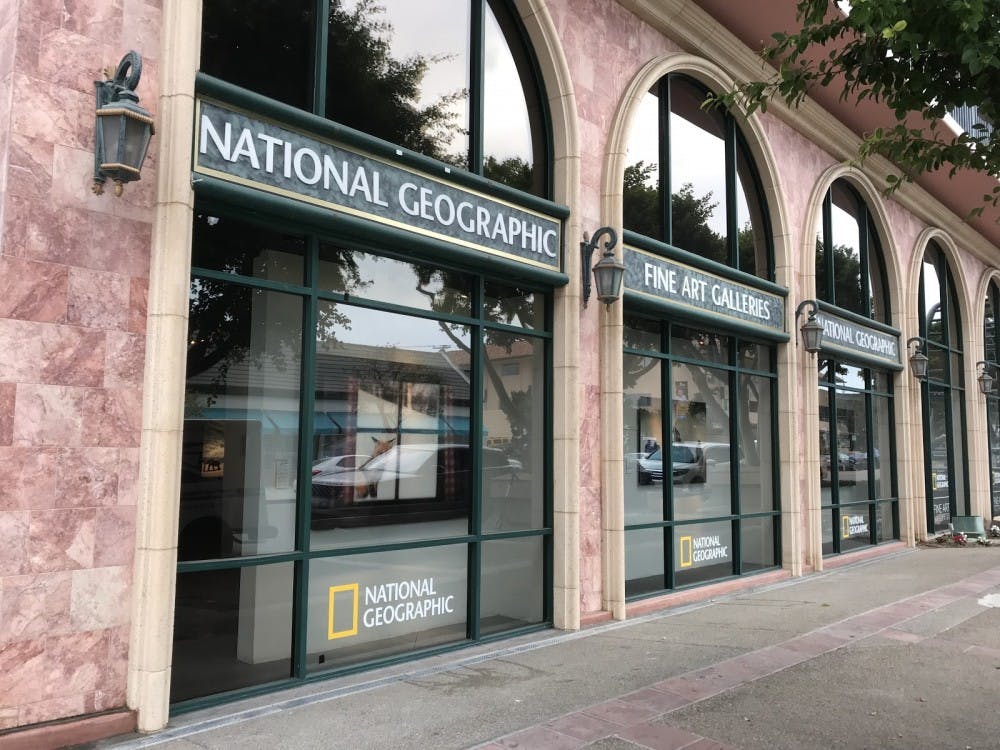This Thanksgiving, I went westward to visit friends and family in La Jolla, San Diego and visited some art galleries. At La Jolla Cove, I was amazed by the artistic atmosphere. While there, I spotted the National Geographic Gallery; Nat Geo has long been my number-one favorite Instagram account, so I was more than excited. I always spent time checking out the breathtaking pictures taken by National Geographic photographers. Curious to find out what the art pieces inside were, I hurried through the glass doors.
I’ve always been a big fan of National Geographic Magazine and its TV channel, so I was thrilled to experience the National Geographic Fine Art Galleries, which presented fine art photography through exclusive limited editions embodying the rich heritage of National Geographic. The location I visited wasn’t quite grandiose, but, behind the simplicity and modern design, each photo powerfully conveyed a story. Later I learned from the gallery manager that the National Geographic Fine Art Gallery of La Jolla was actually the first gallery opened by the company. Walking around, I found two pictures in particular that caught my eye.
A photo titled “Children in the Kingdom of Mustang, Nepal, 2010” captured my attention first. In this picture, two children aged six or seven, have their hands placed in namaste gesture, an Indian gesture of greeting, right in front of their chests. They are wearing ragged clothes and covered with mud, but their faces are serious-looking, demonstrating a sense of respect for their religion. This picture was taken by Cory Richards during his first assignment for National Geographic Magazine. In an area of Upper Mustang called Chhoser where people still dwelled in caves, Richards was on a scientific expedition to find evidence and to acquire a better understanding of migration along the Silk Road. In this rarely visited and unexploited place, he captured a photo of the two Tibetan kids. Richards said he found the two kids extremely Tibetan because they were free from “Chinese influence.” Preserving and promoting culture is what Richards longed for. He did an excellent job of making a positive impact on conveying esoteric culture, and this picture drove me into thinking about the enigmatic lives behind these two innocent yet solemn faces.
Another beautiful photograph was titled “Polar Bear At Ease, Manitoba, Canada.” In this picture, a cute adult polar bear lies on the endless ivory frozen ground in a relaxed position. He has his eyes closed, enjoying the sunshine.
Nobert Rosing, a German wildlife photographer, took this picture on the shores of Hudson Bay when the freshwater lakes had just frozen. Rosing is a very successful photographer; his images appear in books and magazines in both the U.S. and Germany. Interestingly, Rosing does not use any modern technology to alter his images; maybe that’s why I found his work so compelling and realistic. In an era full of Photoshop, Rosing’s works convey the magnificence of nature in its most genuine form.
Art empowers its audience to gain a better understanding of humanity. My trip to the La Jolla Cove was unexpectedly enriching, and I encourage everyone to consider adding a gallery visit to their vacation. I guarantee you won’t regret it.





